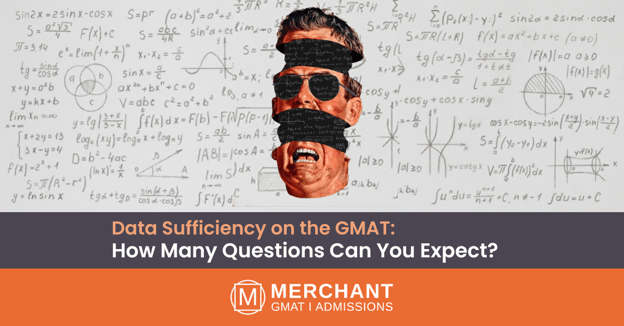From Confusion to Confidence: Mastering GMAT Data Sufficiency Questions
.png?width=1024&height=450&name=MONTH2_MICRO2_NANO_1_7%20(1).png)
Data Sufficiency (DS) questions on the GMAT can be confusing and difficult to master. However, by understanding the skills tested and the mistakes that are often made, you can boost your confidence and improve your performance. In this blog post, we'll break down DS questions and offer some tips on how to approach them successfully.
Data Sufficiency questions are designed to test your ability to understand and apply mathematical concepts.
DS questions are designed to effectively assess your command of basic mathematical concepts by isolating one specific concept at a time. These types of questions allow for deeper exploration of each concept without needing additional contextual information that is usually required for other questions. Answering these questions correctly can help you understand and apply mathematical principles more confidently, providing the foundation for tackling harder related tasks in the future.
The most common mistake made on these questions is failing to correctly identify the information given in the question.
Failing to correctly identify which data is sufficient in the question, or what combinations of data are needed, is a common mistake made during DS questions. Mastery of this concept requires a deep understanding of mathematical principles, as these questions often require students to examine the relationship between different pieces of information. As such, it's important for students to be able to accurately interpret the information and determine what is necessary to move forward with calculations. When taking on DS questions, one must not only understand the underlying mathematics, but also take careful consideration of what the question defines as necessary in order to answer it correctly.
Another common mistake is making assumptions about the data that are not warranted by the information given in the question.
DS questions often require careful consideration of the data provided in order to answer correctly. One of the most common mistakes is to assume something about the data that isn't actually stated in the question. For instance, if a question provides three pieces of information, pay close attention to precisely what each one conveys and don't add any additional implications - this could lead to an incorrect answer. Using only the data presented in the question can help avoid making mistakes related to DS questions!
To avoid these mistakes, first make sure you understand what is being asked in the question, and then carefully consider all of the information given before making any conclusions.
DS questions are meticulous in their design, making mistakes related to mathematical concepts easy to make. In order to avoid falling into the trap of these mistakes, it's best to keep a few steps in mind when approaching such a question. First and foremost, make sure you understand what is being asked: does the problem require an arithmetic approach or logical approach? Additionally, thoroughly review all of the data that is provided within the question—each piece of information could hold the key to your answer. Finally, don't rush; take your time and carefully consider all the elements you've become aware of before deciding on an answer!
With practice, you will be able to confidently answer Data Sufficiency questions on the GMAT!
DS questions are an important part of the GMAT exam, and mastering them is the key to success! They may seem daunting at first, but with practice, you'll be able to answer them confidently and maximize your GMAT score. The key lies in really understanding the mathematical concepts associated with these questions so that you can identify the mistakes typically made related to them. With a steady studying plan, you can make consistent improvement over time and get across the finish line with flying colors!
In conclusion, the DS questions on the GMAT are designed to test your ability to understand and apply mathematical concepts. The most common mistakes include failing to correctly identify the information given in the question, and making assumptions about the data that are not warranted by the information given. To avoid these mistakes, it is important to carefully consider all of the information given in each question before making any conclusions. It may also be helpful to practice frequently so that you become more comfortable with this type of question style. With practice and expert guidance from Merchant GMAT & Admissions, you will be prepared to confidently answer DS questions on your GMAT journey!




